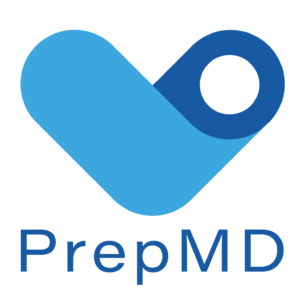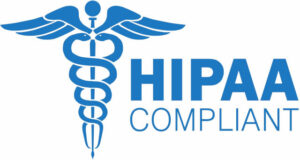At the ’22 Boston Heart Rhythm Society meeting, Fran Moriarty (PrepMD Director of National Accounts) sat down for Podcast conversation to discuss the cardiac device remote monitoring career space.
Beth Davenport is the Clinical Director and Amy Tucker is the Advanced Cardiac Device Nurse for Sanger Heart and Vascular Institute cardiac rhythm device clinic and remote monitoring center.
What Makes Cardiac Remote Monitoring a Great Career Choice?
Beth and Amy were eager to share stories about their careers and explain what they find rewarding about their jobs every day. It seemed to boil down to embracing technology, working alongside smart people with the goal of providing the best patient care.
“Our clinicians make a difference in people’s lives every single day, whether it’s their heart failure management or they have onset AFib, we’re identifying it, we’re getting them to the physician before they have a stroke.”
-Beth on the critical importance of having a highly trained, clinically competent staff
How are Cardiology Clinics Managing the Rapid Growth in Device Remote Monitoring?
Sanger Heart tells the universal story of cardiology clinics across the U.S. of the rapid growth in remote monitoring as the Standard of Care. Back in 2005 the Sanger cardiac patient population was only about 3,500 patients with only 525 billable remotes for the entire year. Fast forward to 2020 where billable remote monitoring took place for all 12,000 patients and nearly 32,000 billable remotes.
Today, Sanger has about 20 clinicians, including cardiac device nurses, cardiac device specialists, and outreach access specialists. Successful growth at Sanger was positively impacted by the addition of the Outreach Specialist. The Outreach Specialist helps troubleshoot communication and administrative responsibilities, freeing up the clinical staff for patient care.
“It just grew so rapidly, and we found out how many lives we were saving by early detection and of potential problems,”
-Amy on the tremendous growth of remote monitoring
Identifying Staffing Needs in a Cardiology Clinic
At Sanger, they attribute hard-work, thorough analysis, and supportive leadership as the building blocks to how they grew their clinic to what it is today. Two different Lean Sigma studies were employed to identify ways to make improvements in the clinic’s workflow process. This analysis allowed for the creation of an accurate staffing model. They were able to identify the amount of work each clinician and outreach specialist can accomplish in a day and the time it takes to care for a group of patients.
“That proof of concept is really helpful when you’re talking to administrators and explaining why you need more staff. What we’re doing is revenue generating, so I think one of the important things for administrators to remember is that device management is most importantly about keeping patients safe.”
-Beth on the results of the staffing studies
COVID-19 helped to force some positive changes
COVID-19 has certainly presented a challenge for healthcare across the board. In this conversation, Beth and Amy explained how COVID served as the prevailing force for change to embrace technology and employ change for the greater good at Sanger. At the onset of COVID their clinic went from about 55% of patient encounters through remote monitoring to 98% in a matter of only a few months. Prior to COVID they had been operating under assumptions that their typical aged patients would likely resist the technology.
“We were wrong. They became very thankful that we could keep an eye on their device without them coming into the office.”
-Beth on their patients’ willingness do virtual visits
The Challenges of Training and Retaining Clinically Competent Staff
Not surprisingly, in a field as complex as cardiac, you’ll find many challenges in terms of recruiting and training a clinically competent staff. Remote monitoring data is connected to a patient and the alerts can be life threatening, with Beth and Amy each telling stories about 911 calls. At Sanger they have a minimum 6-month orientation period for their employees. It takes years to become a true expert in this field, according to Beth.
“These are people that are looking at data that is connected to a patient to make sure that they’re safe …There are so many levels of critical thinking…You have to train people to understand accountability and they have to know all the devices.”
–Beth on the importance of a highly trained staff
The patients coming in person into the clinic may be the most complicated cases with complex device reprogramming needed, but the patients who are at home require thoroughly trained specialists to determine if they also need to be seen in clinic. The remote monitoring specialist is assessing patient data for device leads, battery life, device advisories, software updates, and looking for conditions such as high-rate episodes, or onset atrial fib. Again, it’s a big responsibility, requiring a highly trained staff.
The Future of Cardiac Remote Monitoring
At Sanger, the clinicians take the time to educate patients on their own cardiac conditions. Encouraging patients to take more ownership of their own cardiac conditions should ultimately lead to improved understanding and outcomes. Beth and Amy agreed that increased patient engagement will be front and center for changes coming ahead in the cardiac device space, similar to the way diabetes patients are engaged on a daily basis with their own care. Personal wearable devices and other technologies will continue to expand and change the landscape by bringing more knowledge directly to the patient.
Careers in Cardiac
When the topic turned to choosing a career in cardiac devices, Beth and Amy both describe their own experiences in this career space as technically challenging and clinical rewarding, particularly so with remote patient care seeing so much change and growth right now.
Beth called it the “great marriage of technology and patient care,” with Amy adding, “We need to do a better job of talking about this specialty and getting the word out.”
Thanks to Sanger Health for an insightful interview to help spread the word about the rewarding career field of cardiac device patient remote monitoring. Not many people outside of healthcare know what a cardiac device specialist is or know about cardiac remote monitoring specialists. Young people and college students thinking about a career in healthcare typically know about the traditional roles and won’t necessarily hear about a device specialist at their college career center.
They might know about an ER nurse, but as Beth said, “You don’t see us on Grey’s anatomy.”







